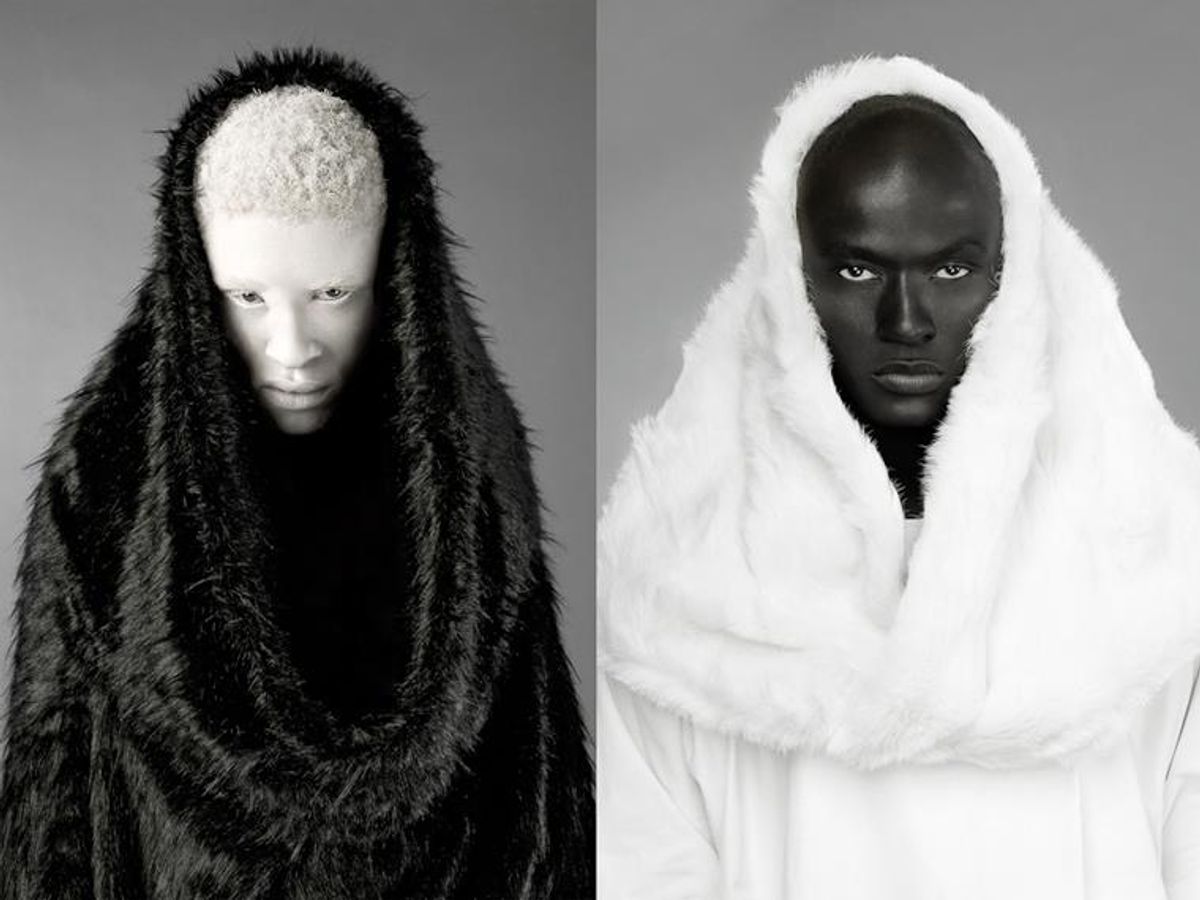When it comes to understanding human diversity, the concept of "darkest people in the world" often sparks curiosity and intrigue. This term refers to individuals with the highest concentration of melanin in their skin, a natural pigment responsible for coloration. Melanin-rich skin is not just a biological trait but also a celebration of cultural heritage, resilience, and beauty.
Throughout history, people with dark skin have been subjected to various stereotypes and misconceptions. However, it is essential to recognize that melanin-rich skin is a testament to human adaptability and evolution. In this article, we will delve into the science behind melanin, cultural significance, and the lived experiences of the darkest people in the world.
Our journey will explore the biological, social, and historical dimensions of dark skin. By understanding the science and celebrating the cultural richness of melanin-rich communities, we can foster greater appreciation and respect for the diversity that defines humanity.
Read also:Aaron Judges Brother Unveiling The Family Ties And Their Impact On The Judge Dynasty
Table of Contents
- Biological Background of Melanin
- Historical Perspective on Dark Skin
- Geographical Distribution of Melanin-Rich People
- Cultural Significance of Dark Skin
- Social Challenges Faced by Dark-Skinned Individuals
- Celebrating Diversity in Melanin-Rich Communities
- Health Considerations for Dark Skin
- Famous Personalities with Dark Skin
- Scientific Research on Melanin
- Conclusion
Biological Background of Melanin
Melanin is a pigment produced by specialized cells called melanocytes. It plays a crucial role in protecting the skin from harmful ultraviolet (UV) radiation. People with darker skin have higher concentrations of melanin, which provides enhanced protection against sun damage.
There are three main types of melanin: eumelanin (responsible for dark brown and black pigmentation), pheomelanin (associated with red tones), and neuromelanin (found in the brain). The darkest people in the world predominantly possess high levels of eumelanin.
Factors Influencing Melanin Production
- Genetic inheritance
- Geographical location
- Exposure to sunlight
Studies show that individuals living closer to the equator tend to have darker skin due to the need for greater UV protection. This adaptation highlights the remarkable ability of humans to evolve in response to environmental pressures.
Historical Perspective on Dark Skin
Throughout history, dark skin has been viewed through various lenses, ranging from admiration to discrimination. In ancient civilizations such as Egypt and Mesopotamia, dark-skinned individuals were often revered for their strength and wisdom. However, during colonial times, darker skin tones were often stigmatized, leading to systemic racism.
Impact of Colonialism
Colonialism introduced harmful ideologies that perpetuated the idea of racial superiority based on skin color. These ideologies have had lasting effects on societal attitudes toward dark-skinned individuals, contributing to systemic inequalities.
Geographical Distribution of Melanin-Rich People
The darkest people in the world are predominantly found in regions near the equator, including Sub-Saharan Africa, parts of South Asia, and the Pacific Islands. These areas receive intense sunlight, making high melanin levels an evolutionary advantage.
Read also:Grinch Messages The Ultimate Guide To Spreading Holiday Cheer With A Twist
Regions with High Melanin Concentration
- Sub-Saharan Africa
- Southern India
- Pacific Islands
Each region has its unique cultural practices and traditions, adding to the rich tapestry of melanin-rich communities worldwide.
Cultural Significance of Dark Skin
Dark skin holds deep cultural significance in many communities. It is often associated with beauty, resilience, and strength. Traditional practices, such as body art and ceremonial rituals, celebrate the uniqueness of melanin-rich individuals.
Celebratory Traditions
In many African cultures, dark skin is celebrated through rituals like scarification and beadwork. These practices highlight the beauty and cultural heritage of melanin-rich individuals, reinforcing community bonds and identity.
Social Challenges Faced by Dark-Skinned Individuals
Despite the cultural significance of dark skin, melanin-rich individuals often face social challenges such as colorism and discrimination. Colorism refers to the preference for lighter skin tones within communities of color, perpetuating harmful stereotypes.
Addressing Colorism
Efforts to combat colorism include promoting positive representation in media, education, and advocacy. By challenging harmful stereotypes and celebrating diversity, we can create a more inclusive society.
Celebrating Diversity in Melanin-Rich Communities
Embracing diversity is essential for fostering understanding and respect among all communities. Melanin-rich individuals contribute significantly to global culture through art, music, and literature. Their contributions enrich the world, showcasing the beauty of human diversity.
Artistic Contributions
- African-American music
- African literature
- Contemporary art
These artistic expressions highlight the creativity and resilience of melanin-rich communities, inspiring future generations.
Health Considerations for Dark Skin
While dark skin provides excellent protection against UV radiation, it also has unique health considerations. Individuals with darker skin tones may face challenges such as vitamin D deficiency due to reduced absorption of sunlight.
Managing Vitamin D Levels
Healthcare professionals recommend regular sun exposure and dietary supplements to maintain optimal vitamin D levels. Awareness campaigns can help educate melanin-rich communities about these health considerations.
Famous Personalities with Dark Skin
Many renowned personalities with dark skin have made significant contributions to various fields. Their achievements inspire countless individuals worldwide, breaking barriers and challenging stereotypes.
Biography of Notable Figures
Below is a table highlighting some famous personalities with dark skin:
| Name | Profession | Country |
|---|---|---|
| Barack Obama | Politician | United States |
| Virginia Woolf | Author | United Kingdom |
| Usain Bolt | Athlete | Jamaica |
Scientific Research on Melanin
Ongoing scientific research continues to uncover the complexities of melanin. Recent studies have explored its role in skin protection, disease prevention, and even potential applications in technology.
Key Findings
- Melanin's role in preventing skin cancer
- Potential applications in biotechnology
- Genetic factors influencing melanin production
These findings underscore the importance of further research to better understand the complexities of melanin-rich skin.
Conclusion
The darkest people in the world represent a celebration of human diversity and resilience. By understanding the biological, cultural, and historical dimensions of melanin-rich skin, we can foster greater appreciation and respect for all individuals. This article has explored the science behind melanin, cultural significance, and the lived experiences of dark-skinned individuals.
We invite you to share your thoughts and experiences in the comments below. Additionally, consider exploring other articles on our website to deepen your understanding of global diversity. Together, we can create a more inclusive and respectful world.


